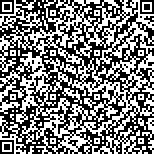| 引用本文: |
吴治民,段行武,雷天浩,高玥璇,李峻崎,陈李源.血热证银屑病患者血清褪黑素的相关性研究[J].湖南中医药大学学报,2023,43(5):928-934[点击复制] |
|
| |
|
|
| 本文已被:浏览 3113次 下载 1200次 |
| 血热证银屑病患者血清褪黑素的相关性研究 |
| 吴治民,段行武,雷天浩,高玥璇,李峻崎,陈李源 |
| (北京中医药大学东直门医院, 北京 100700;北京中医药大学, 北京 100029) |
| 摘要: |
| 目的 探究血热证银屑病患者与健康人群血清褪黑素(melatonin, MLT)分泌水平的差异,分析血热证银屑病患者血清MLT与病情严重程度、睡眠状况、氧化应激及炎症因子的相关性。方法 检测80例血热证银屑病患者组及32例健康人组血清MLT含量进行组间比较,并依据病情严重程度及睡眠质量对银屑病患者分组,进行组间比较,同时收集患者的皮损面积和严重程度指数评分(psoriasis area and severity index, PASI)、匹兹堡睡眠质量指数表评分(Pittsburgh sleep quality index, PSQI)、中医证候评分,检测血清中的丙二醛(malondialdehyde, MDA)、超氧化物歧化酶(superoxide dismutase, SOD)、谷胱甘肽过氧化物酶(glutathione peroxidase, GSH-px)、白介素-17A(interleukin-17A, IL-17A)、白介素-6(interleukin-6, IL-6)、肿瘤坏死因子-α(tumor necrosis factor-α, TNF-α),进行相关性研究。结果 血热证银屑病患者血清MLT水平低于健康人(P<0.05),重度银屑病患者血清MLT水平低于轻中度患者(P<0.05),有睡眠障碍患者血清MLT低于无睡眠障碍患者(P<0.05)。血热证银屑病患者血清MLT与PASI、PSQI、中医证候评分均呈负相关(P<0.05),与血清中MDA、IL-17A呈负相关(P<0.05),与血清中SOD、GSH-px呈正相关(P<0.05),未发现与IL-6、TNF-α的相关性(P>0.05)。结论 MLT与血热证银屑病患者的病情严重程度、血热程度、睡眠状况密切相关,对评判患者的病情有着参考意义;MLT与炎症因子IL-17A、氧化产物MDA呈负相关,与抗氧化酶SOD、GSH-px呈正相关,提示MLT可能在银屑病氧化应激及炎症因子相关通路中发挥积极作用。 |
| 关键词: 银屑病 血热证 褪黑素 睡眠状况 氧化应激 炎症因子 相关性 |
| DOI:10.3969/j.issn.1674-070X.2023.05.026 |
| 投稿时间:2022-11-23 |
| 基金项目:国家自然科学基金面上项目(82074436);北京市财政项目(PXM2019_026273_000005)。 |
|
| Correlation study of serum melatonin in patients with psoriasis of blood heat syndrome |
| WU Zhimin,DUAN Xingwu,LEI Tianhao,GAO Yuexuan,LI Junqi,CHEN Liyuan |
| (Dongzhimen Hospital, Beijing University of Chinese Medicine, Beijing 100700, China;Beijing University of Chinese Medicine, Beijing 100029, China) |
| Abstract: |
| Objective To investigate the differences in serum melatonin (MLT) secretion levels between patients with psoriasis of blood heat syndrome(PBHS) and healthy people, and to analyze the correlation between serum MLT, and disease severity, sleep quality, oxidative stress and inflammatory factors of PBHS patients. Methods Serum MLT levels were measured in groups of 80 PBHS patients and 32 healthy individuals for comparison. Then, PBHS patients were grouped according to their severity and sleep quality for comparison. At the same time, psoriasis area and severity index (PASI), Pittsburgh sleep quality index (PSQI), and TCM syndrome score were obtained; malondialdehyde (MDA), superoxide dismutase (SOD), glutathione peroxidase (GSH-px), Interleukin-17A (IL-17A), interleukin-6 (IL-6), and tumor necrosis factor-α (TNF-α) were detected; correlation study was finally performed. Results The serum MLT levels of PBHS patients were lower than those of healthy people (P<0.05), the serum MLT levels of patients with severe PBHS were lower than those of patients with mild to moderate PBHS (P<0.05), and the serum MLT levels of patients with sleep disorders were lower than those of patients without sleep disorders (P<0.05). Serum MLT of PBHS patients was negatively correlated with PASI, PSQI, and TCM syndrome scores (P<0.05), negatively correlated with serum MDA and IL-17A (P<0.05), and positively correlated with serum SOD and GSH-px (P<0.05), and no correlation was found between IL-6 and TNF-α (P>0.05). Conclusion Being closely related to the severity of the disease, the degree of blood heat and the quality of sleep in PBHS patients, MLT can help diagnose PBHS. Further more, MLT is negatively correlated with inflammatory factor IL-17A and oxidation product MDA, and positively correlated with antioxidant enzyme SOD and GSH-px, suggesting that MLT may play an active role in oxidative stress and inflammatory factor related pathways in PBHS. |
| Key words: psoriasis blood heat syndrome melatonin sleep status oxidative stress inflammatory factors correlation |
|

二维码(扫一下试试看!) |
|
|
|
|




